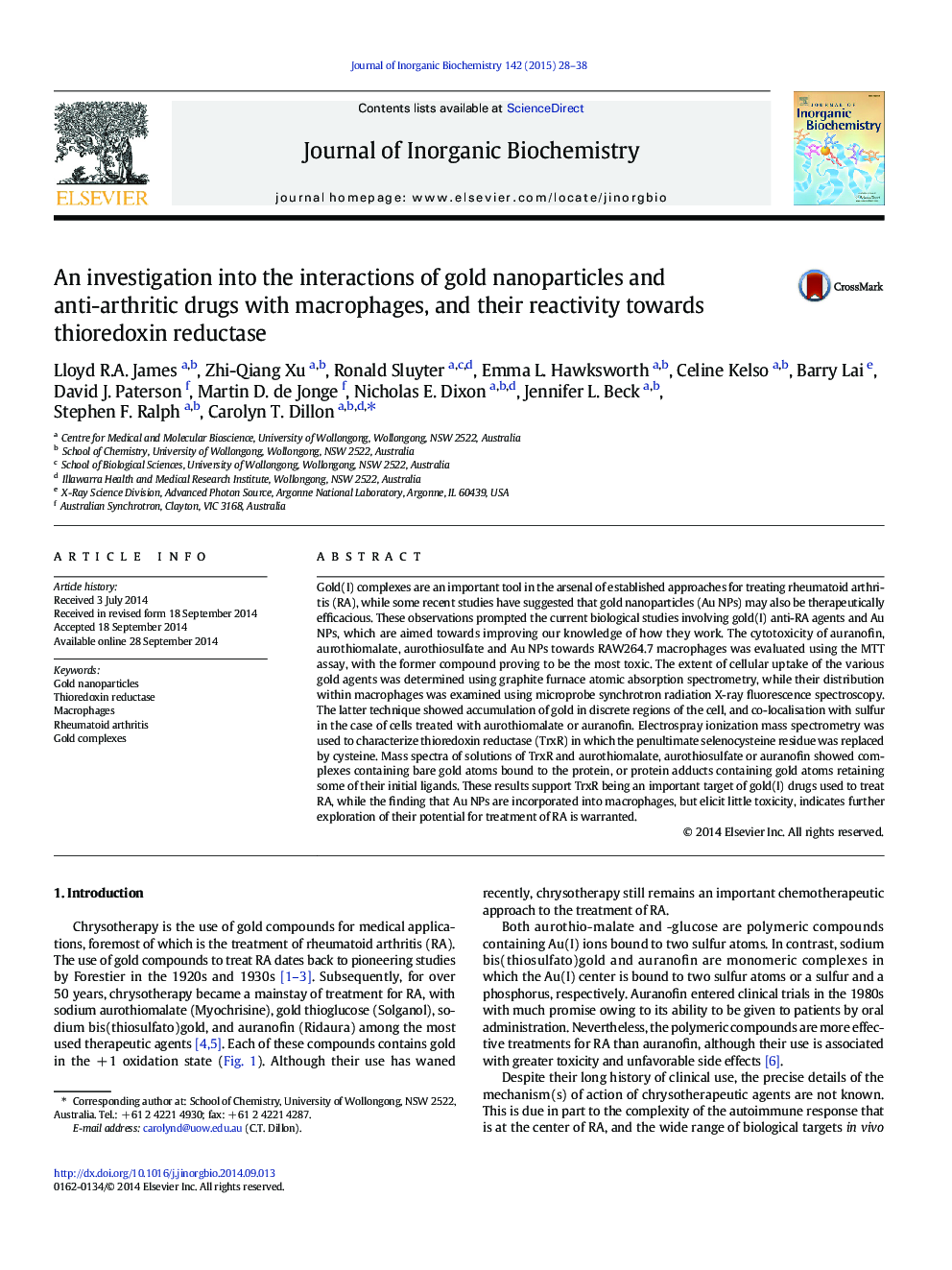| کد مقاله | کد نشریه | سال انتشار | مقاله انگلیسی | نسخه تمام متن |
|---|---|---|---|---|
| 1317216 | 1499445 | 2015 | 11 صفحه PDF | دانلود رایگان |
• Gold nanoparticles (Au NPs) and Au(I) drugs were compared using RAW264.7 cells.
• Au NPs were non-toxic up to 60 μM and showed higher cell uptake than Au(I) drugs.
• SR-XRF maps of Au NP-treated cells showed accumulation in discrete regions.
• Au(I) drugs showed evidence of both ligand loss and retention when binding to TrxR.
• Au NPs did not bind to thioredoxin reductase.
Gold(I) complexes are an important tool in the arsenal of established approaches for treating rheumatoid arthritis (RA), while some recent studies have suggested that gold nanoparticles (Au NPs) may also be therapeutically efficacious. These observations prompted the current biological studies involving gold(I) anti-RA agents and Au NPs, which are aimed towards improving our knowledge of how they work. The cytotoxicity of auranofin, aurothiomalate, aurothiosulfate and Au NPs towards RAW264.7 macrophages was evaluated using the MTT assay, with the former compound proving to be the most toxic. The extent of cellular uptake of the various gold agents was determined using graphite furnace atomic absorption spectrometry, while their distribution within macrophages was examined using microprobe synchrotron radiation X-ray fluorescence spectroscopy. The latter technique showed accumulation of gold in discrete regions of the cell, and co-localisation with sulfur in the case of cells treated with aurothiomalate or auranofin. Electrospray ionization mass spectrometry was used to characterize thioredoxin reductase (TrxR) in which the penultimate selenocysteine residue was replaced by cysteine. Mass spectra of solutions of TrxR and aurothiomalate, aurothiosulfate or auranofin showed complexes containing bare gold atoms bound to the protein, or protein adducts containing gold atoms retaining some of their initial ligands. These results support TrxR being an important target of gold(I) drugs used to treat RA, while the finding that Au NPs are incorporated into macrophages, but elicit little toxicity, indicates further exploration of their potential for treatment of RA is warranted.
K and Au microprobe SR-XRF maps obtained from RAW264.7 cells treated with 60 μM Au NPs.Recent studies have shown that gold nanoparticles (Au NPs) exhibit therapeutic properties in rheumatoid arthritis patients. Cytotoxicity, uptake and distribution of Au NPs in RAW264.7 macrophages have been compared with gold(I) anti-arthritis drugs. Electrospray ionization mass spectrometry studies of Au(I) complexes towards thioredoxin reductase are also presented.Figure optionsDownload as PowerPoint slide
Journal: Journal of Inorganic Biochemistry - Volume 142, January 2015, Pages 28–38
